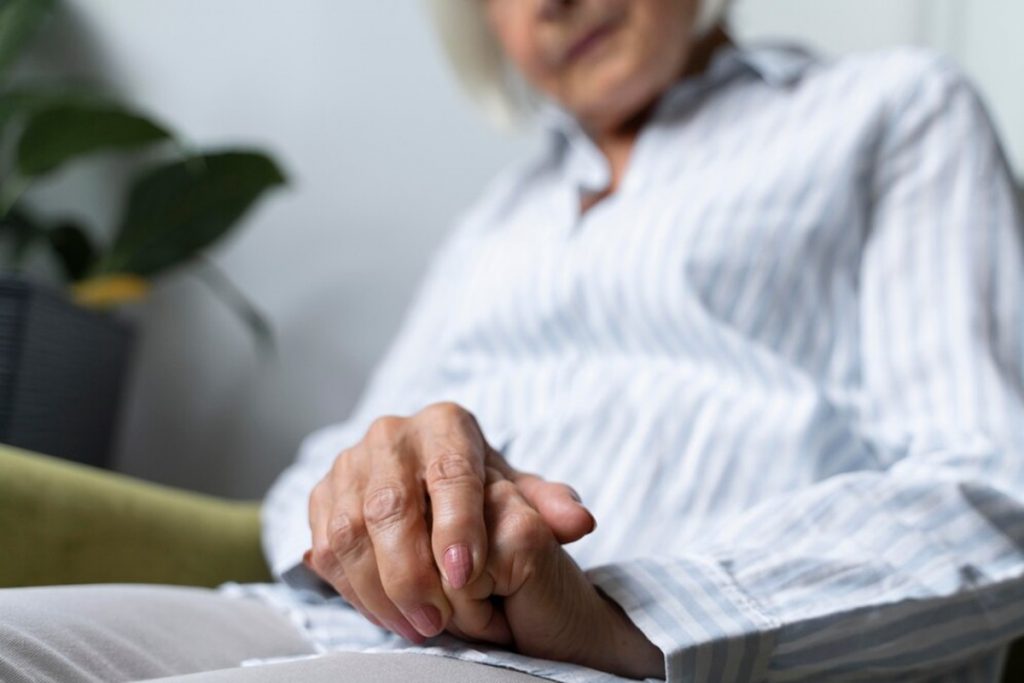Caring for people with disabilities requires understanding, compassion, and practical knowledge. Whether it’s a family member or a loved one, providing the right kind of support can significantly improve their quality of life.
In honor of Disability Pride Month, we will explore how to help someone with a disability, focusing on older adults. From understanding common disabilities to offering physical and emotional support, you’ll find essential tips to enhance the well-being of those in your care.
Understanding Disabilities in Older Adults
As people age, they may encounter various disabilities that affect their daily activities and overall life quality. Being aware of these common disabilities is crucial for providing the necessary support and ensuring that older adults can lead fulfilling lives.
Here are some of the most common disabilities among older adults and how they impact their daily living:
- Mobility Issues: Mobility issues are prevalent among older adults due to arthritis, joint pain, and general frailty, which makes movement and balancing challenging.
- Cognitive Impairments: Cognitive impairments, such as dementia and Alzheimer’s disease, significantly affect memory, thinking, and decision-making.
- Sensory Impairments: Sensory impairments, including vision and hearing loss, are prevalent in older adults. They can lead to difficulties in communication and social interaction.
- Chronic Diseases: Chronic diseases such as diabetes, heart disease, and chronic obstructive pulmonary disease (COPD) are common among older adults and can complicate their everyday tasks.
These disabilities can make independent living difficult. However, with the proper support and adaptive strategies, older adults can maintain a good quality of life.
How Can You Make Life Easier for People With Disabilities?
Making life easier for people with disabilities involves addressing both their physical and emotional needs. A holistic approach ensures that individuals feel supported, empowered, and capable of leading fulfilling lives. Here are some practical ways on how to care for people with disabilities by providing the assistance they need.
Providing Both Physical & Emotional Assistance
Providing both physical and emotional assistance to people with disabilities is essential since these aspects of well-being are interconnected.
To offer physical assistance, ensure the living environment is safe and accessible. This includes installing grab bars in the bathroom, using mobility aids, and providing adequate lighting to prevent possible accidents.
As for emotional support, it is essential to actively listen and validate their feelings. Recognize the importance of their mental health. You should also consider setting up simple activities for people with disabilities to help them build a sense of autonomy.
Adaptive Clothing and Equipment
Adaptive clothing and equipment can significantly improve the lives of people with disabilities. They are designed to be easy to wear and remove which can make dressing less stressful.
For instance, you can buy adaptive clothes for disabilities with Velcro closures instead of buttons, which can be easier for people with limited dexterity. Assistive devices like reachers, dressing sticks, and button hooks can also help with everyday tasks. These items not only provide practical help but also enhance the dignity and independence of someone with a disability.
There are also specific adaptive clothing for wheelchair users that are designed to provide comfort and ease of use. Additionally, individuals with arthritis might benefit from specialized arthritis clothing, making dressing simpler and less painful.
8 Helpful Tips for Caregivers
Caring for someone with a disability can be challenging but also incredibly rewarding. Aside from emergency preparedness, you should also understand how to help with their special needs. Here are some tips for family caregivers to help you provide the best care possible while also taking care of yourself.
Effective Communication Between Caregiver and Patient
Clear and compassionate communication is key to providing adequate care. Here’s how you can improve it:
- Active Listening: Pay attention to what the person is saying without interrupting. Show that you’re listening by nodding or giving verbal affirmations like “I understand” as they are expressing their feelings.
- Simple Language: Use clear and straightforward language, especially if the person has a cognitive disability. Avoid jargon and complex sentences.
- Non-Verbal Cues: Be mindful of body language and facial expressions. Sometimes, these can convey more than words. Make eye contact and ensure your body language is open and friendly.
Coping Mechanisms for Managing Caregiver Stress
Taking care of a person with a disability can be stressful. Here are some ways to manage it:
- Take Breaks: Taking regular breaks throughout the day helps prevent burnout. If you need a longer break, look into potential home care options.
- Support Groups: Joining a support group can provide emotional support and practical advice from others in similar situations. Sharing experiences can be very therapeutic and validates the complex emotions you may experience.
- Self-Care: Make time for activities you enjoy and maintain a healthy lifestyle. Exercise, eat well, and get enough sleep. Caring for yourself ensures you can continue to provide the best care for your loved one.
- Set Boundaries: It’s important to set clear boundaries to avoid feeling overwhelmed. Learn to say no and delegate tasks with other family members or healthcare professionals when necessary.
- Seek Professional Help: If you’re feeling overwhelmed, don’t hesitate to seek help from a mental health professional. Counseling can provide coping strategies and emotional support.
The Importance of Ongoing Support
If you want to learn how to help someone with a disability, you have to understand that it is an ongoing process that requires patience, empathy, and practical solutions. By knowing their special needs and providing both physical and emotional support, you can significantly enhance their quality of life. Remember, your efforts make a difference, and ongoing support is crucial in maintaining their independence and well-being.
For more information on adaptive clothing options, check out Silverts’ range of adaptive apparel designed to make life easier.
Sources
Disability and Health Promotion. “Prevalence of Disabilities and Health Care Access by Disability Status and Type Among Adults — United States, 2016.” https://www.cdc.gov/ncbddd/disabilityandhealth/features/kf-adult-prevalence-disabilities.html. Accessed on July 25, 2024.
